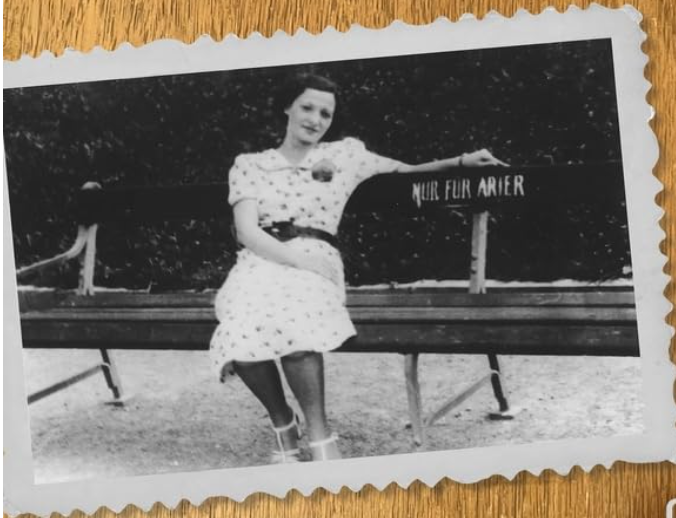Holocaust
Jews actively resisted persecution, new Holocaust research shows

The old understanding of Jews as being passive during the Holocaust has become obsolete with new research, says Wolf Gruner, the Shappel-Guerin Chair in Jewish Studies at the University of Southern California, who wrote the book, Resisters: How Ordinary Jews Fought Persecution in Hitler’s Germany.
This is challenging the narrative, said Gruner, the founding director of the University of Southern California Dornsife Centre for Advanced Genocide, in a webinar hosted by the Johannesburg Holocaust & Genocide Centre and Classrooms without Borders on 28 August.
“Since 1933, the Nazis complained in their official reports that Jews were impudent. And during the war, the Reich Security Main Office emphasised that it had received information about the impudent attitude of Jews from various corners of the Reich,” said Gruner.
“In July 1935, the Gestapo emphasised in a report for Berlin that Jews were born with disrespect for state authority. And during the same months, police arrested more than 100 Jewish men and women in Berlin for offences against the German state and Nazi party.”
Said Gruner, “The frequent complaints about impudent Jews points to a forgotten reality of widespread acts of resistance by individual Jews.
“One thousand two hundred Jewish men and women served sentences for political and criminal offences in prisons across the German Reich,” said Gruner. “This was 2% of the remaining Jewish population.”
He said that since 1945, historians had discussed Jewish resistance mostly in terms of art and group activities. “Israeli scholars, however, emphasised early on that there was day-to-day resistance. But for decades, most scholars settled on the fact that only organised and armed resistance was accounted for, and that it was very rare, and if it happened, it was only in the eastern occupied territories like Poland or the Soviet Union.”
Through his research, Gruner has tried to widen the concept of Jewish resistance to “any individual or group action in opposition to known laws, actions, or intentions of the Nazis and their helpers”.
“In contrast to other groups of the German population, Jews were exposed to racial persecution or racist persecution, but also to special or particular legislation,” he said.
Gruner explained that Jews resisted persecution in Germany by contesting Nazi propaganda, through oral protest, written protests like petitions, and defying anti-Jewish laws and restrictions like changing their names, refusing to wear the yellow star, and breaking curfew. Jews would also use physical self-defence in attempting to resist.
“There were no patterns of resistance,” he said. “Every Jewish person sought ways to defy and resist.”
Gruner gave many examples of how Jewish people in Germany and Austria sought to resist the Nazi regime. “Lizzie Rosenfeld from Vienna, who is on the cover of my book, committed three crimes in literally one sitting. She sat on a bench which was forbidden for Jews. Then, she had her friend take a picture of this defiant act. You can see how she embraced this act of defiance through her body language. She finally smuggled the negative of that photo out of Germany, when she emigrated to the United States.”
Similarly, Gruner said, “Throughout the 1930s, Jews were arrested in Munich and Hamburg for these moving displays of antisemitic newspapers; for destroying Nazi flags; or ripping down anti-Jewish propaganda posters.”
He told the story of David Bornstein, in Hamburg in 1936, who accompanied his wife to a bus terminal on the outskirts of Hamburg. While he waited for the bus to leave and chatted to his wife, he tried to destroy the swastika on the bus with his walking stick. Bornstein was arrested, spent five weeks in jail, and fled from Germany to Israel.
“Even later, even during the war, police reports mention the arrest of Jews, for example in Leipzig, for ripping down Nazi flags or destroying anti-Jewish posters,” Gruner said.
“In March and April 1933, Jews were prosecuted in German cities for publicly criticising the beatings and murder of Jews by stormtroopers or the torture in early concentration camps. Throughout those years, Jewish men and women spoke up in public against specific anti-Jewish laws or violent events,” he said.
Petitions were often used as an act of resistance as they challenged the prerogative of German policy. Said Gruner, “These petitions were usually discarded as written in vain. However, when you look closely at them, they were always used by their authors to reclaim their rights as German citizens and taxpayers. And so, they tried in these petitions to challenge the prerogative of the Nazi persecution that Jews were kind of subhuman and not worthy of being Germans.”
After the violence in 1935 and demonstrations against Jews in Berlin, many Jewish store owners petitioned the Berlin police president.
However, at the same time, Jews also drafted anonymous leaflets against persecution, Gruner said. In his research, he found that Benno Neuburger, a real estate broker, distributed postcards denouncing the Nazi regime and calling Hitler the “murderer of five million”.
Said Gruner, “Many more people were capable of doing these things than we ever thought. These weren’t unconscious acts. Jews knew what they were getting themselves into. They knew that there were repercussions, not only for themselves, but maybe for their friends and family.
“Today, the situation is different with social media,” he said. “It allows for quicker organisation beyond the individual. However, we also shouldn’t underestimate the fact that at the time, people had telephones. People would visit each other. They would talk. So there was some level of self-organisation which isn’t yet really tapped into.”
